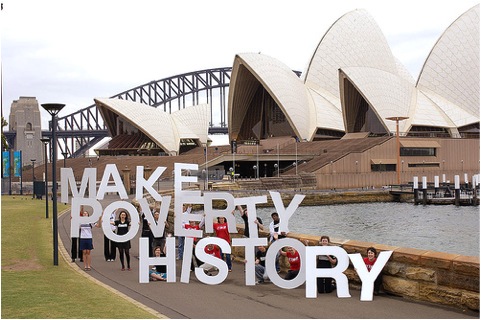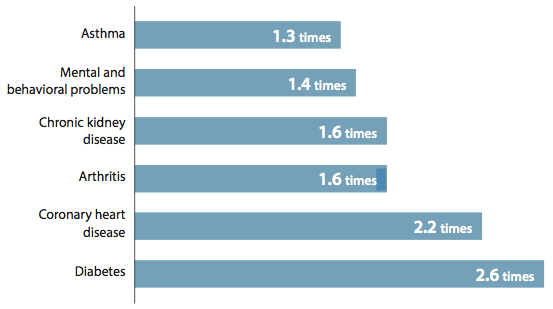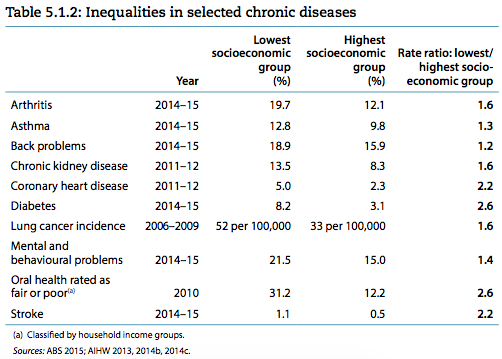Australia’s Institute of Health and Welfare released Australia’s Health 2016 earlier this year and the up-date has further confirmed the poor health statues of socioeconomically disadvantaged people. Australia’s Health 2016 indicated that socioeconomically disadvantaged people were more likely to suffer illness, disability, and have a lower life expectancy.
Socioeconomically disadvantaged people were 1.3 times more likely to suffer asthma, 1.4 times more likely to have mental or behavioural problems, 1.6 times more likely to have chronic kidney disease, lung cancer or arthritis. They are over 2 times as likely to suffer coronary heart disease and 2.6 times more likely to have diabetes than those living in the highest socioeconomic areas. In addition to this they had 1.8 times as many potentially avoidable deaths causes by lifestyle.
Socioeconomically disadvantaged people were 3 times as likely to be a daily smoker, had 1.4 times as much inactivity and were more likely to be obese, have high blood pressure or poor dental health.
This trend of higher health status among those from higher socioeconomic areas and poorer health outcomes for socioeconomically disadvantaged people is known as the ‘social gradient of health’ and is a phenomenon seen on a global and local scale. In Australia people who live in rural or remote areas and those with an indigenous background are more likely to be socioeconomically disadvantaged. Given that these groups also suffer from poorer health outcomes, it is clear that a range of interacting factors are influencing the health of all individuals, and that being socioeconomically disadvantaged is just one contributor towards poorer health outcomes in Australia.
Resources








